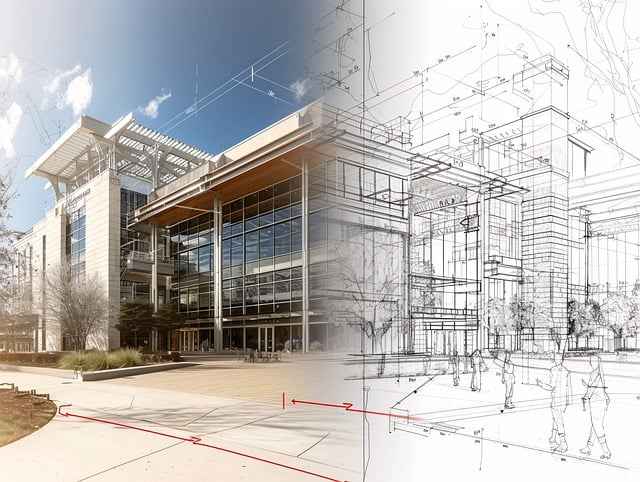
Urban planning and design
Published on
Average Read time: 2 minutes 4 seconds
Urban planning and design focus on shaping the physical, social, and economic aspects of cities, neighborhoods, and communities to create vibrant, sustainable, and livable environments. Here's a closer look at the elements involved in urban planning and design:
Master Planning: Urban planners develop master plans that outline long-term visions and strategies for the growth and development of cities and regions. Master plans identify land use patterns, transportation networks, infrastructure investments, and environmental protection measures to guide future development.
Zoning and Land Use Regulation: Urban planners establish zoning regulations and land use policies to regulate the use and development of land within urban areas. Zoning ordinances define permissible land uses, density limits, building heights, setback requirements, and other development standards to promote orderly and sustainable growth.
Site Analysis: Urban planners conduct site analysis to evaluate the physical, environmental, and socio-economic characteristics of specific sites or areas. This includes assessing factors such as topography, soil conditions, water resources, ecological features, transportation access, and existing land uses to inform planning and design decisions.
Transportation Planning: Urban planners design transportation systems and infrastructure to facilitate the movement of people and goods within urban areas. This includes planning for roads, highways, public transit, pedestrian pathways, bike lanes, and parking facilities to improve mobility, connectivity, and accessibility.
Public Space Design: Urban planners design public spaces, parks, plazas, and streetscapes to enhance the quality of life and promote social interaction within urban communities. This includes creating pedestrian-friendly environments, providing green spaces, and incorporating amenities such as seating, lighting, and public art.
Mixed-Use Development: Urban planners promote mixed-use development that integrates residential, commercial, and recreational uses within compact and walkable neighborhoods. Mixed-use zoning encourages a diverse mix of land uses and activities, reduces automobile dependency, and supports local economies.
Community Engagement and Public Consultation: Urban planners engage with stakeholders, residents, community groups, and elected officials through public consultation processes. This includes organizing community meetings, workshops, surveys, and online forums to gather input, feedback, and consensus on planning and development proposals.
Environmental Sustainability: Urban planners incorporate principles of environmental sustainability into urban planning and design practices. This includes promoting energy efficiency, green building practices, renewable energy sources, water conservation measures, and protection of natural habitats to minimize environmental impact and enhance resilience to climate change.
Master Planning: Urban planners develop master plans that outline long-term visions and strategies for the growth and development of cities and regions. Master plans identify land use patterns, transportation networks, infrastructure investments, and environmental protection measures to guide future development.
Zoning and Land Use Regulation: Urban planners establish zoning regulations and land use policies to regulate the use and development of land within urban areas. Zoning ordinances define permissible land uses, density limits, building heights, setback requirements, and other development standards to promote orderly and sustainable growth.
Site Analysis: Urban planners conduct site analysis to evaluate the physical, environmental, and socio-economic characteristics of specific sites or areas. This includes assessing factors such as topography, soil conditions, water resources, ecological features, transportation access, and existing land uses to inform planning and design decisions.
Transportation Planning: Urban planners design transportation systems and infrastructure to facilitate the movement of people and goods within urban areas. This includes planning for roads, highways, public transit, pedestrian pathways, bike lanes, and parking facilities to improve mobility, connectivity, and accessibility.
Public Space Design: Urban planners design public spaces, parks, plazas, and streetscapes to enhance the quality of life and promote social interaction within urban communities. This includes creating pedestrian-friendly environments, providing green spaces, and incorporating amenities such as seating, lighting, and public art.
Mixed-Use Development: Urban planners promote mixed-use development that integrates residential, commercial, and recreational uses within compact and walkable neighborhoods. Mixed-use zoning encourages a diverse mix of land uses and activities, reduces automobile dependency, and supports local economies.
Community Engagement and Public Consultation: Urban planners engage with stakeholders, residents, community groups, and elected officials through public consultation processes. This includes organizing community meetings, workshops, surveys, and online forums to gather input, feedback, and consensus on planning and development proposals.
Environmental Sustainability: Urban planners incorporate principles of environmental sustainability into urban planning and design practices. This includes promoting energy efficiency, green building practices, renewable energy sources, water conservation measures, and protection of natural habitats to minimize environmental impact and enhance resilience to climate change.
Urban planning and design are interdisciplinary fields that require collaboration between urban planners, architects, engineers, economists, sociologists, and other professionals. By integrating land use, transportation, infrastructure, and community development strategies, urban planners create cities and neighborhoods that are equitable, resilient, and conducive to the well-being of their residents.